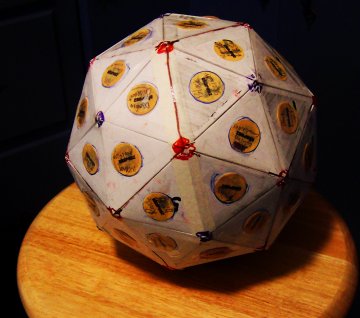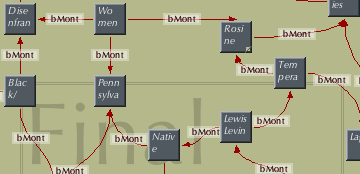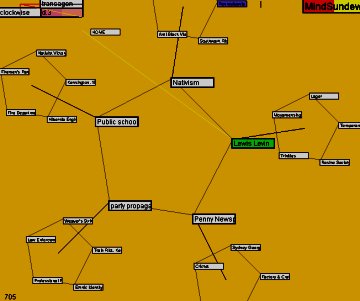Work is proceeding on the geodesic hypertext. I now have decided the contents of each triangle, with the help of Tinderbox and a host of round tacky stickers. Now, I just have to get the final scans of the visual material that goes in each triangle.

Tinderbox has made the process much easier. In fact, Tinderbox gave me the idea in the first place. In an upcoming issue of Tekka, I describe how I use Tinderbox to perform historical research and writing. I've been using it for my honors thesis on 19th century Philadelphia ethnic life. As I prepared my materials, I thought about putting together a hypertext from all the reasearch I have done (getting in all the things I must cut from the linear, paper version).
When the opportunity came to do an art-related history project, I jumped at the chance. Now, Tinderbox didn't just help me figure out how to organize the topics on the sphere....

... but it is also allowing me to connect the visual content with the audio segments, all pointing back to the original sources I use for the project. Hypertext is too much fun.
Late last night (ok, early in the morning), I entered part of the hypertext into gZigZag, by Ted Nelson and Tuomas Lukka (and others). At first, I found it cumbersome. But then, I played with some different views. The vTreeWithLines clearly showed what was going on with my data, but the most impressive was the MindSundew view.
This view is usually useless, since it usually shows something that is far too complex. But in this case, it figured out the geometry of my hypertext and began to display my information as a geodesic sphere!

And for kicks, there's always the brilliant Millenium Bookball, by George W. Hart.

